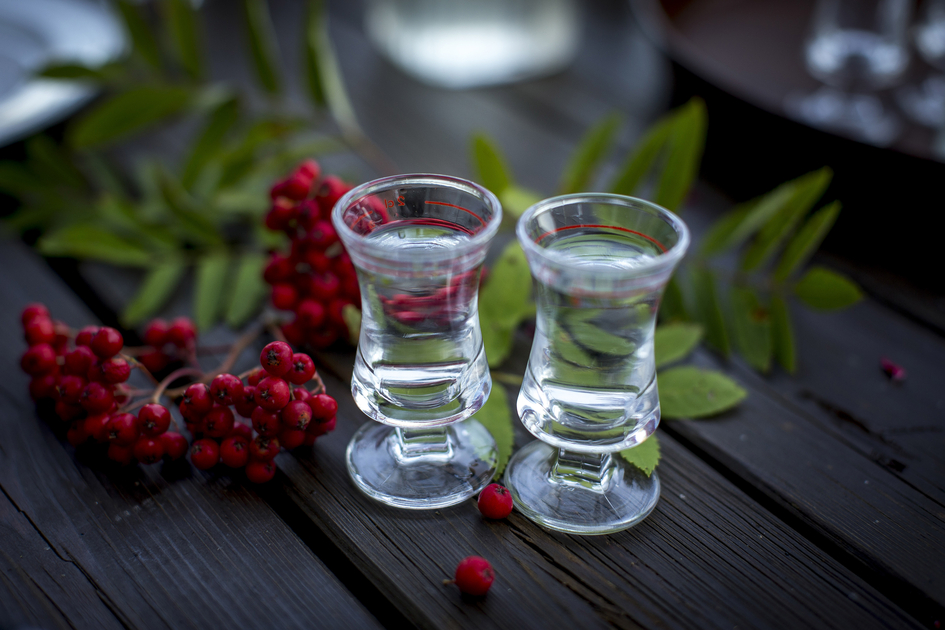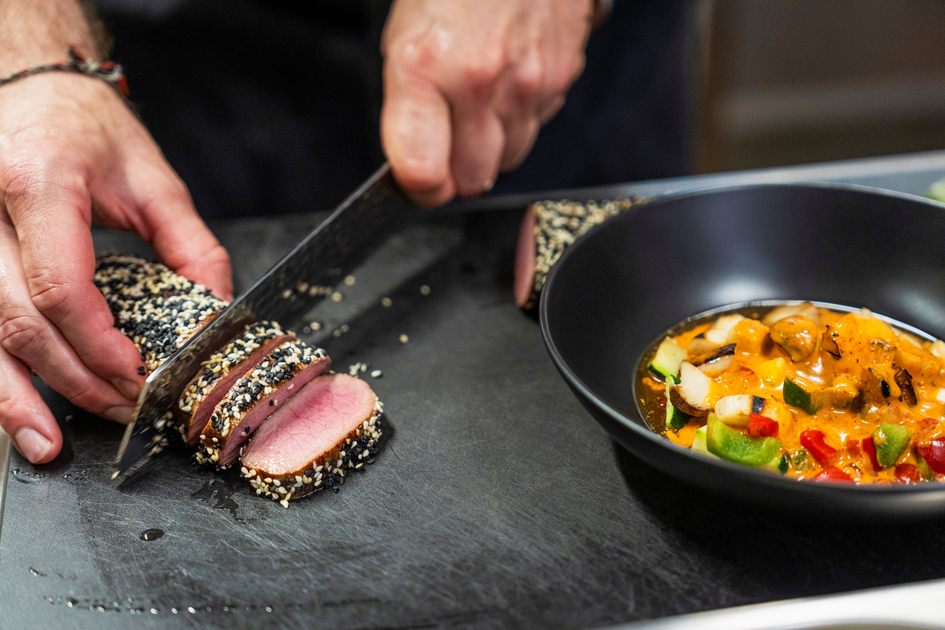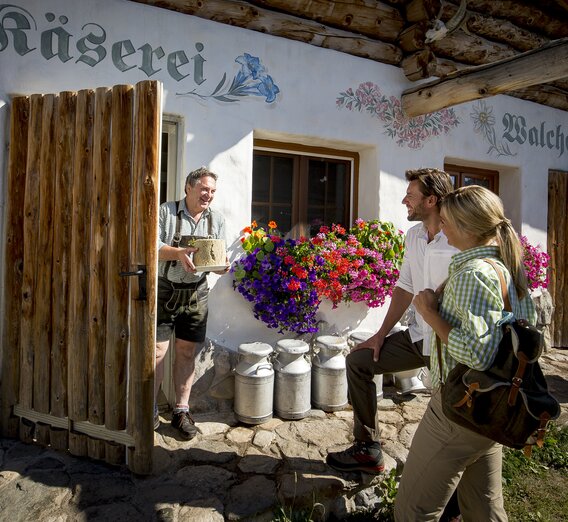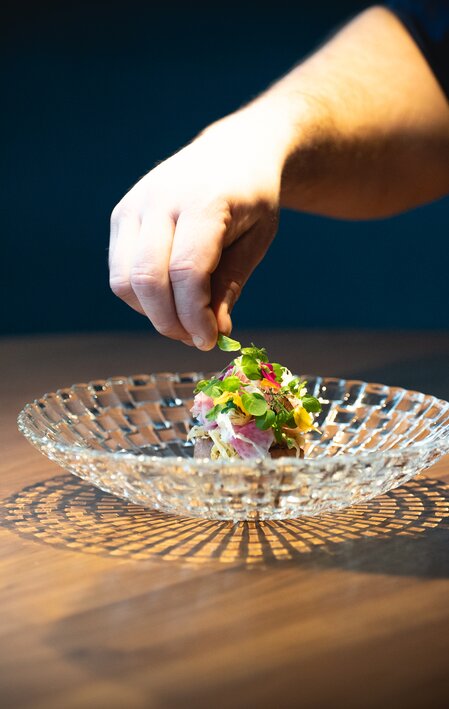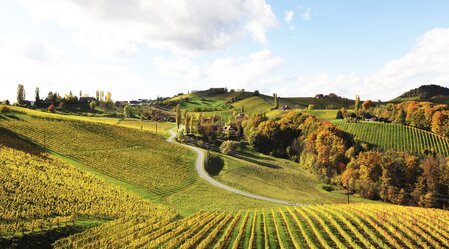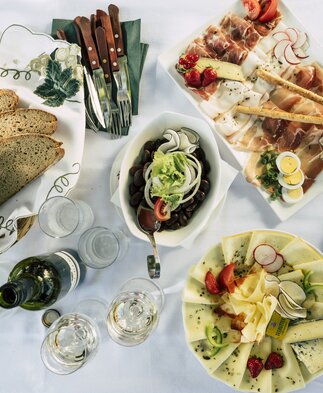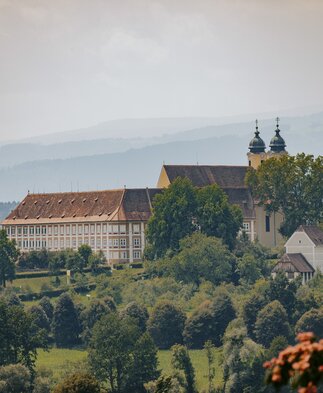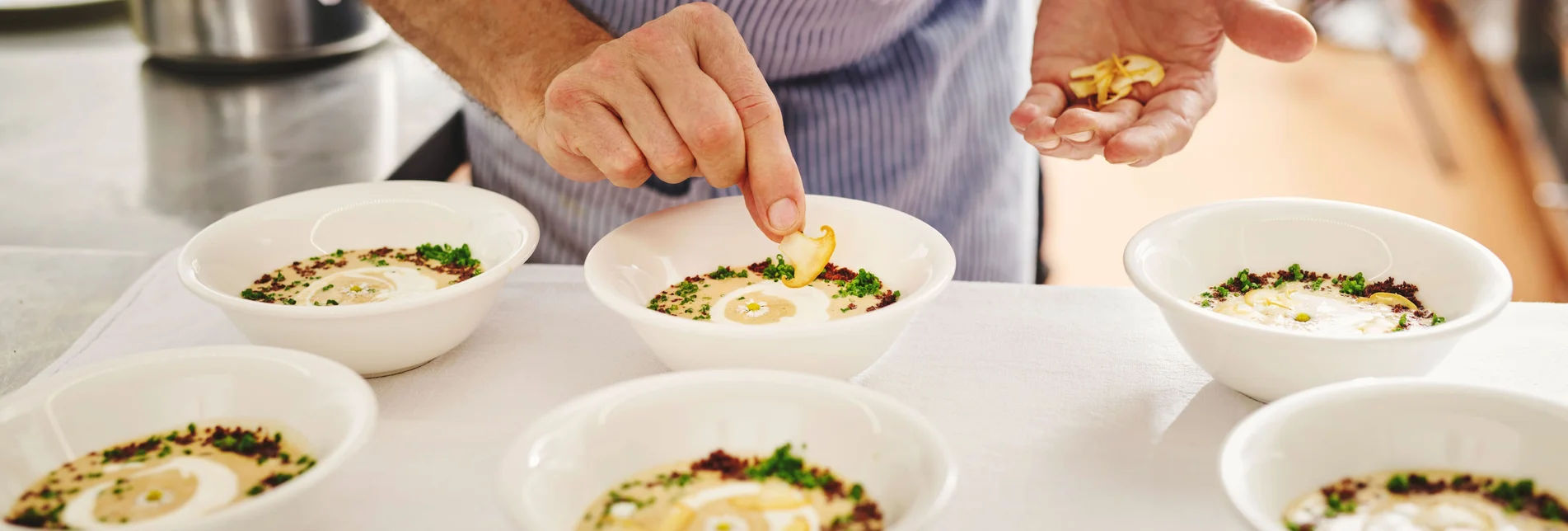

Styrian cuisine
Styria tastes good and does you good. A journey through the green heart of Austria lets you experience what makes Styrian cuisine so special.
It is intricately connected to nature. Above all, to the soil on which apples, wine and pumpkins grow. As well as to the seasons and different landscapes.
Culinary joys in the green heart of Austria
Experience Styrian specialities
Schilcher wine, pumpkin seed oil or ham delicacies: Many of Austria's internationally renowned specialities come from Styria. If you want to learn more about the people and products behind Styria's culinary delights, we recommend you visit the many gourmet manufactories, farm shops or farmers' markets. In addition, the hosts of fine restaurants, alpine huts or wine taverns welcome you to taste their products and dishes.
What the mountain hut is for the alpine north, the wine tavern is for the south. The food served at the taverns is mainly cold snacks, and at the huts, also hot and traditionally alpine dishes. Most of the time, you can enjoy the homemade specialities with a unique view of the surrounding scenery.
When you visit the manufacturers and producers, the actual tasting quickly becomes secondary. The knowledge, the dedication, the handling of the raw materials: In Styria, you'll meet people who love what they do. And as the saying goes: What you do with love, you do well. And that is especially true in Styria.
Other specialities of Styria
Equally enjoyable and tasty: scarlet runner beans, cheese, horseradish and delicacies made of fish from local waters and meat from regional farms, Refined with exquisite vinegar and oil or accompanied by fine wines and brewery-fresh beers, true culinary delights are created in Styrian kitchens. Those who prefer non-alcoholic beverages can enjoy a variety of fresh juices and pure nectars.
Styria definitely has a sweet side. Chocolate specialities, gingerbread and homemade bakeries such as doughnuts, funnel cakes, strudels, Buchteln or Bundt cakes: The choice is yours if you want to satisfy your sweet tooth!
Fine wines and spirits made from fruit, pine cones and herbs
Apple, quince, pear, plum or rowanberry: A multitude of fine distillates are made from local fruit varieties – including clear fruit brandies and high-quality liqueurs.
The "Zirberl" is a classic among Styrian spirits. It is made from the fruits of the pine tree, the red pine cones. Red, tart and with a distinctive taste, this noble spirit goes wonderfully with a hearty snack at an alpine hut. It is sometimes also made into fine desserts, such as a stone pine parfait. In Styria, the stone pine is appreciated as a robust "miracle tree" beneficial for health.
However, fruits are by far not the only plants that are made into spirits. Styrian herbs are also a favourite for distilling as the Mariazeller Kräuterbitter shows. If not in the form of herbal bitters, you are guaranteed to find herbs across the kitchens of Styria – either as a main ingredient, for example, in the form of nettle soup, or as a flavour component of individual dishes or salads.
Delicious food all year round
Those who want to get to know Styria and its specialities have the opportunity to do so in every season.
As soon as the weather permits, picturesque picnic areas invite you to taste and enjoy scrumptious delicacies outdoors. In summer, lamb is the main dish, but also game such as Maibock. In addition, freshly harvested and hand-picked produce from the forests and meadows are served: Mushrooms or sweet treats like strudels and pastries with fresh berries and fruits, for instance.
In autumn, everything revolves around harvest season. Anyone who wants to can lend a hand, help out and be there when something enjoyable, tasty and precious is created. For example, during the milling of grain. In the winter months, the focus is on tasty game dishes and delicious Christmas baking.
Full of zest and subtlety
Flavours "From Glacier to Wine"
If you go in search of an "(original) Styrian dish", you will find different culinary traditions depending on the region you are currently in: In the south, fruit, chicken and sausages are more common, while in the north it's game, fish and fried foods. In any case, you can taste the influence of the landscapes. They shape the many flavours of Styrian cuisine.
Most guests are familiar with fried chicken, often served on a salad with pumpkin seed oil. But only a few know what the "aufg'setzte Henn" is all about: The wheat-coloured Sulmtaler chicken is a true Styrian cultural treasure and an almost extinct breed. It moves around a lot in fresh air and gets plenty of time to grow. People in southern Styria also take their time when it comes to preparing it. Typically and traditionally, it is made into roast chicken with a scrumptious bread filling.
If you take a closer look at Styrian cuisine, you will quickly notice that there's also a strong soup tradition. Pumpkin cream soup, herb soup or mushroom soup with Sterz are particularly popular.
Speaking of Sterz: Sterz is a dish made of buckwheat flour (Heidensterz), maize semolina (Türkensterz), rye flour (Brennsterz) or wheat semolina (Grießsterz). Formerly a simple and traditional food, it has gained in popularity in recent years and can be found in many kitchens and on the plates of Styria once again.





